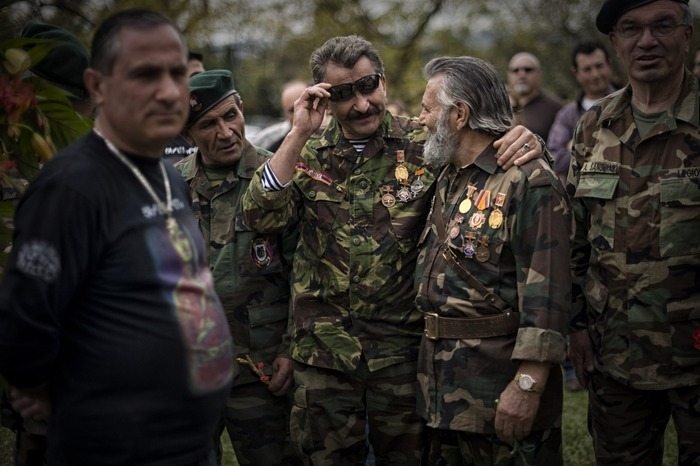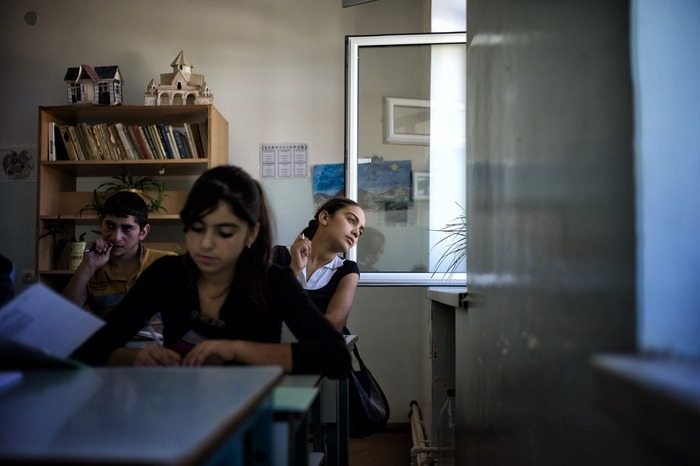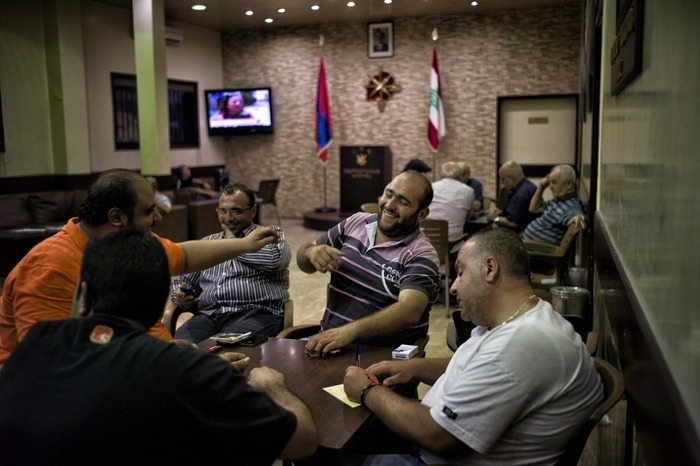Special for the Armenian Weekly

Scout Tufankjian received photographic repute by becoming the only independent journalist to follow then-Senator Barack Obama from his initial candidacy through to his victory on election night in 2008.The images she captured during the campaign produced the bestselling book, Yes We Can: Barack Obama’s History-Making Presidential Campaign. Her picture of Michelle and Barack Obama in warm embrace became the most liked picture on Facebook and the most re-tweeted picture in history.
Tufankjian’s latest collection is There is Only the Earth: Images from the Armenian Diaspora Project; though categorizing it merely as a collection of photographs would be a simplification of the scope and narrative of her work. Tufankjian trekked to five different continents over the course of four years and bore witness to the eclectic, multi-faceted, enduring Armenian Diaspora. Communities from Calcutta to Ethiopia are showcased—the similar chestnut-tinted smiling faces of young Armenians clearly transcend global coordinates.
Tufankjian does not consider herself a writer; instead she imparts her storytelling via carefully cultivated images. The narrative she weaves does not need words or paragraphs, though it speaks volumes. There is Only the Earth highlights the theme of survival, with individuals and communities sharing a different understanding of what being Armenian is to them. Published in April 2015 in commemoration of the Centennial of the Armenian Genocide, its pages are filled with photographs and short blurbs, featuring personal narratives of what each pocket of the diaspora means to the individual witnessing it. Looking forward and beyond 1915, the book mirrors the true strength and resilience of the Armenian people. It was Tufankjian’s wish for the book to become a way to celebrate our survival and accomplishments as a people at the same time that we were mourning our losses.

As an Armenian reader, no matter how underwhelmingly patriotic one might be, it would be taxing to remain indifferent while flipping through the pages of this culmination of Tufankjian’s work documenting the diaspora. One of the reasons There is Only the Earth is so impactful is because it does not lend its side to any summary or definition of what being Armenian should feel like. The pictures range from isolated moments to public experiences, with the underlying theme being presence: We are here, we have remained, we will flourish. Armenians from different regions show how their upbringing has guided their own self-narrative, how the diaspora has moulded their individual identity, and how their own identity has moulded the diaspora itself.
Tufankjian was born in Boston to an Armenian-American father and an Irish-American mother. She grew up isolated from the hubs of the Massachusetts-Armenian community. Armenian magazines and newspapers became her muse while connecting to various Armenian realities outside her family and friends. The multi-layered nature of Armenian identity fascinated Tufankjian, enough so that she decided to travel across the world and visit Armenian communities along the way.

There is Only the Earth is a beacon of hope and light, in a history that has too often been described by its own native sons and daughters as dark, dim, and depressing. Her book is the story of survival; the story of always remembering, but never letting the narrative take the better part of us; the story of “we are still here”; the story of “we never left.”
With the vast Armenian Diaspora being showcased, on the anniversary of the Genocide Centennial no less, Tufankjian has forced the reader to respect the past, appreciate the present, and—out of a visceral spite to succeed—look forward to the future.
The experience of discovering the book, for an Armenian reader, is one that can be likened to greedily digging through an old photo album found in a distant relative’s house—seeing your own visage in the beautiful and carefully curated pages, while simultaneously discovering branches of your extended family tree you were not even aware had blossomed from the same trunk.



I couldn’t agree more. Varak’s gift as a writer has helped capture Scout’s talents as a storyteller-through-pictures.